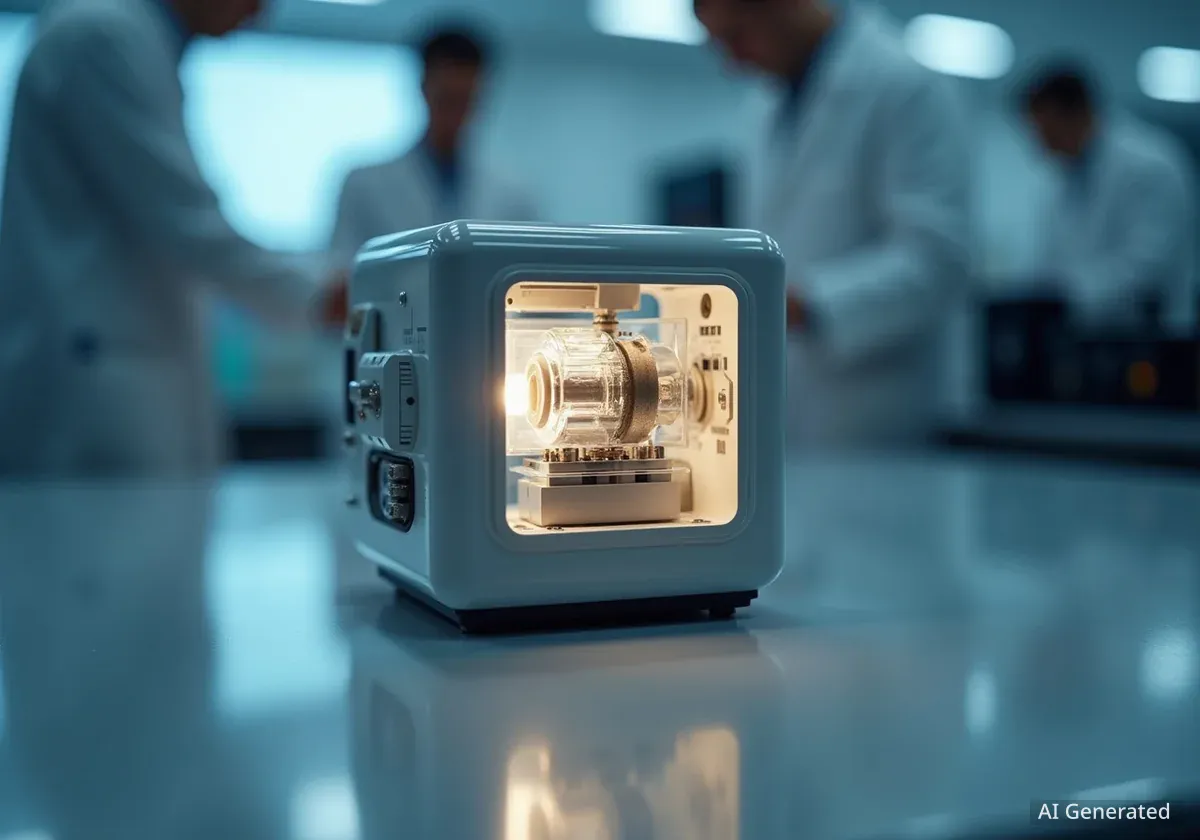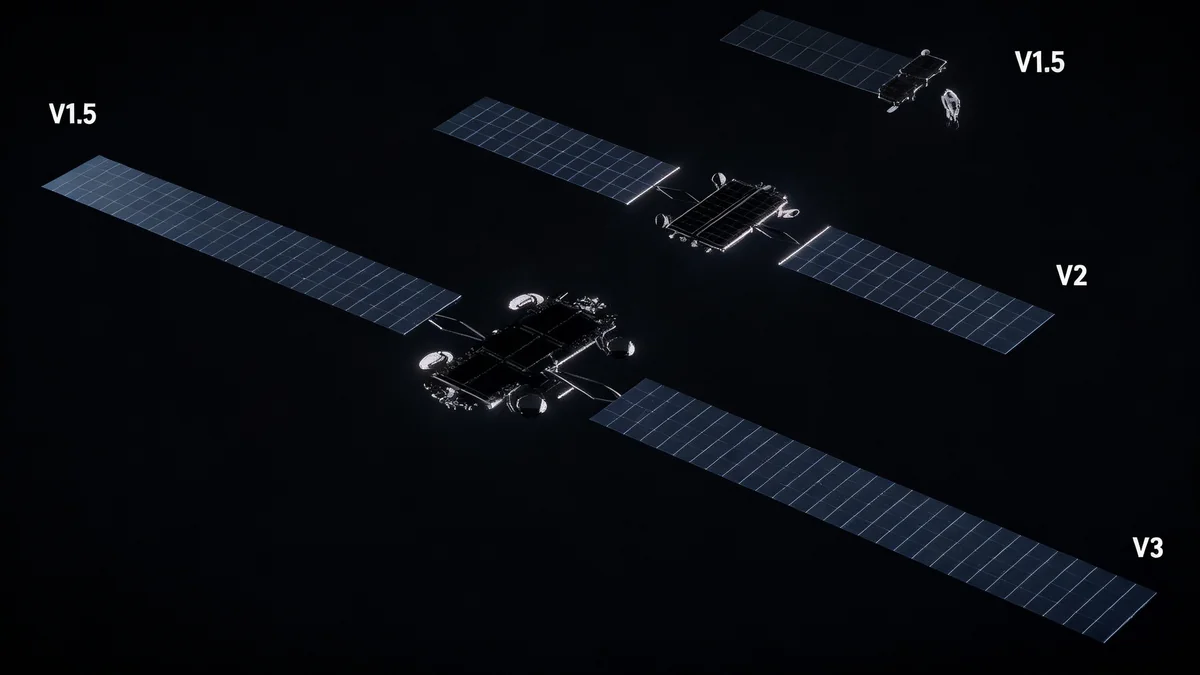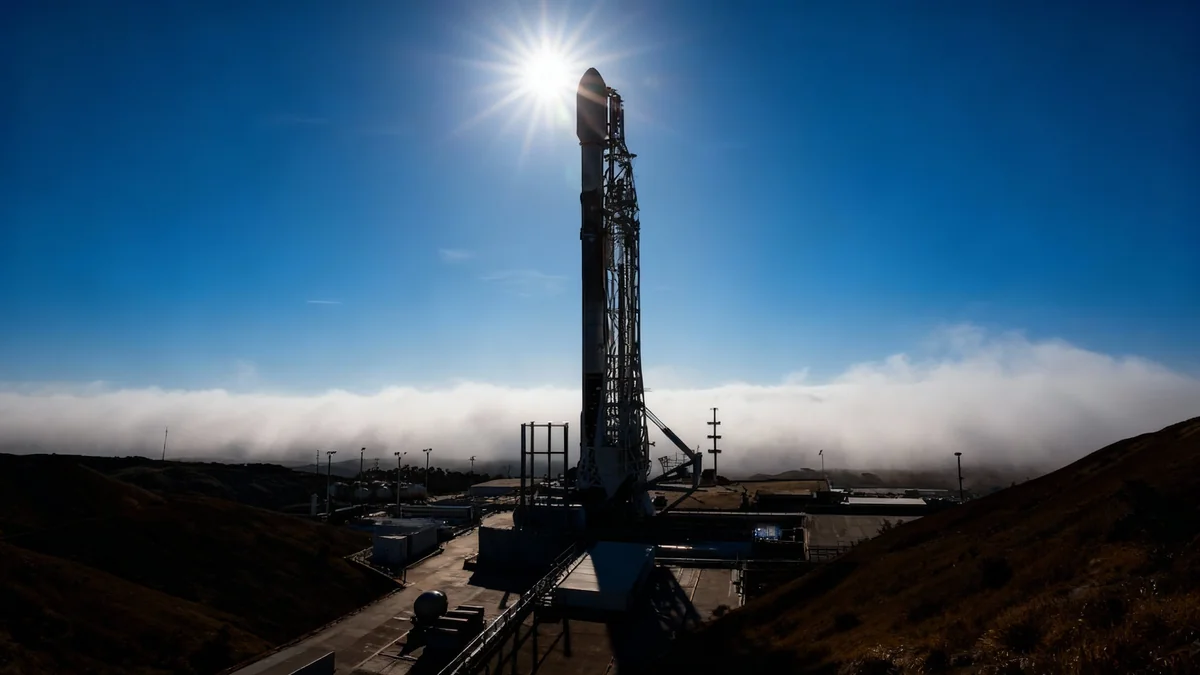A powerful computer chip, typically used to train advanced artificial intelligence on Earth, is scheduled for launch into orbit. The mission, led by startup Starcloud, will test the feasibility of moving massive data centers from the ground into space, a move that could significantly reduce the environmental impact of modern computing.
The satellite, named Starcloud-1, will carry an NVIDIA H100 GPU. This test represents a critical first step toward a future where the cloud infrastructure that powers our digital lives operates above the planet, not on it.
Key Takeaways
- A Starcloud satellite will carry an NVIDIA H100 AI chip into orbit to test data processing in space.
- The mission aims to prove that data centers can operate more efficiently and sustainably in space, using solar power and the vacuum for cooling.
- Onboard AI will process Earth observation data in real-time, potentially speeding up disaster response and environmental monitoring.
- The long-term vision includes building vast, multi-gigawatt data centers in orbit to handle global AI and computing needs.
The Problem with Data Centers on Earth
Nearly every digital action—from sending an email to streaming a video or using an AI assistant—is processed in a data center. These facilities are warehouses filled with powerful computers that require enormous resources to operate.
On Earth, data centers are a major consumer of electricity, not just for running the servers but also for the extensive cooling systems needed to prevent them from overheating. They also use vast quantities of water for cooling, placing a strain on local resources.
Environmental Footprint
Terrestrial data centers contribute to heat, noise, and greenhouse gas emissions. The demand for these facilities is growing exponentially with the rise of artificial intelligence, creating a significant environmental challenge.
Finding sustainable ways to power and cool the next generation of computing infrastructure is one of the tech industry's most pressing problems. Starcloud, a company based in Redmond, Washington, believes the solution lies beyond our atmosphere.
A New Frontier for Cloud Computing
Space offers a unique environment that solves two of the biggest problems for data centers: power and cooling. Solar energy is abundant and constantly available in orbit, while the cold vacuum of space provides a natural, passive cooling system.
"The only environmental cost is the launch," said Starcloud CEO Philip Johnston. "After that, we could save ten times the carbon emissions compared with running data centers on Earth."
By moving this infrastructure into orbit, the company aims to create a new paradigm for computing that is both more powerful and more sustainable. The initial mission is a proof of concept designed to show that high-performance computing hardware can function effectively in the harsh environment of space.
The Starcloud-1 Mission
The first satellite, Starcloud-1, is roughly the size of a small refrigerator. Its primary payload is the NVIDIA H100 GPU, a processor that is nearly one hundred times more powerful than any chip previously sent into orbit.
Once operational, the GPU will not sit idle. Its first task is to process vast amounts of satellite imagery directly in space. Traditionally, satellites collect raw data and transmit it back to Earth for analysis, a process that can introduce significant delays.
Real-Time Analysis in Orbit
By processing data in orbit, Starcloud-1 can deliver insights almost instantly. This capability has profound implications for several fields:
- Wildfire Detection: Identifying and tracking fires as they start, allowing for faster response times.
- Agriculture: Monitoring crop health and yields across vast regions to improve food security.
- Weather Forecasting: Analyzing atmospheric conditions to generate more accurate and timely weather predictions.
The mission will also test Google's Gemma large language model, marking the first time an advanced AI model of its kind will operate in space. This will test its ability to function and provide analysis in a completely new environment.
The Future Vision: Orbital Data Centers
The Starcloud-1 mission is just the beginning. The company has a long-term roadmap that envisions a future where massive data centers orbit the Earth, handling a significant portion of the world's AI and cloud computing workloads.
Future systems are planned to incorporate NVIDIA's next-generation Blackwell GPUs, which promise even greater performance. Starcloud's ultimate goal is to construct a five-gigawatt orbital data center that would span approximately 2.5 miles (about 4 kilometers) in width.
Such a facility could manage enormous computational tasks while drastically reducing the cost and carbon footprint associated with terrestrial data centers. As the cost of launching payloads into space continues to decrease, thanks to reusable rocket technology, this vision is becoming increasingly practical.
According to Johnston, the 2030s could be the decade when building new data centers in orbit becomes more common than building them on land. This shift would represent one of the most significant changes in digital infrastructure since the dawn of the internet.
What This Means for Everyone
If this experimental mission succeeds, it could have a far-reaching impact on daily life. The services that depend on cloud computing—from social media apps and online gaming to complex scientific research—could become faster and more efficient.
More importantly, it offers a path toward a more sustainable digital future. By moving a power-hungry industry off the planet, we could free up significant energy and water resources on Earth. This could help mitigate climate change and reduce the environmental burden on communities located near large data centers.
The project is a bold combination of technological innovation and environmental responsibility. As humanity's reliance on data continues to grow, looking to space may no longer be science fiction, but a necessary step in our technological evolution.





